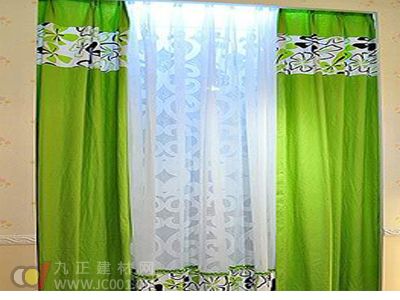Curtain purchase tips
When it comes to choosing a curtain rod, the first thing you should consider is its load-bearing capacity. Plastic rods are prone to aging, while aluminum alloy rods lack strength and aren't very durable. Leather rubber rods tend to crack easily, and iron rods may fall off over time. The best option is a pure stainless steel rod, though it's more expensive. To improve stability, you can add more rings to distribute the force evenly.
If you want a long-lasting solution, consider using a track system that allows for multiple wall codes. This way, the curtain and fabric are sewn together, making it easy to replace the curtain later without removing the entire setup. It also makes cleaning and maintenance much easier. Plus, this system supports three-layer curtains (curtain + window screen + fabric), offering better functionality than a traditional rod.

Next, keep in mind that the Accessories often account for two-thirds of the total cost. Many people assume that a curtain costing 30-40 yuan per meter won’t be too expensive, but when it comes to installation, they often find out that the fabric itself only takes up about one-third of the price. The rest goes toward rails, plugs, pulleys, hooks, laces, and other components. These items are usually not included with the fabric, so you’ll need to purchase them separately. To save money, try negotiating with the store and focus on getting a good deal on the fabric.
Another tip: don’t forget to reclaim the leftover fabric at the end. Standard curtain fabric is usually 2.8 meters in height, but the actual width needed depends on your space. If you're making a 2.5-meter-high curtain, you can leave a few centimeters of extra fabric. Even if you don’t need it now, keeping it can be useful later. For example, if you have a small window in your study or living room, you might only need a half-curtain around 1.5 meters high. Not taking back the remaining fabric could mean losing almost half the cost.
The leftover fabric can be cut into smaller pieces and used for things like hand towels, curtain ties, or even cushion covers. With a little creativity, you can make matching decor that complements your existing curtains, creating a cohesive look and adding a personal touch to your space.
Lastly, measuring curtains properly is essential. Always measure the window’s width and height before purchasing. If you have a curtain box, measure from the inside edge; if there’s a window frame, measure from the outside. The general rule is to ensure the curtain extends beyond the window sill. A "floor-length" curtain looks more elegant and can make a small window stand out more.
If you’re making your own curtains, use this formula: [fixed height (curtain height + 5)] × fabric length needed > wall width × 3. (Note: the numbers in parentheses should be whole numbers.)
Accessories
Wenzhou Shenghong Metal Products Co.,Ltd , https://www.shenghonglock.com